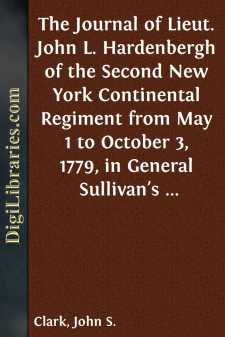Categories
- Antiques & Collectibles 13
- Architecture 36
- Art 48
- Bibles 22
- Biography & Autobiography 813
- Body, Mind & Spirit 142
- Business & Economics 28
- Children's Books 17
- Children's Fiction 14
- Computers 4
- Cooking 94
- Crafts & Hobbies 4
- Drama 346
- Education 46
- Family & Relationships 57
- Fiction 11829
- Games 19
- Gardening 17
- Health & Fitness 34
- History 1377
- House & Home 1
- Humor 147
- Juvenile Fiction 1873
- Juvenile Nonfiction 202
- Language Arts & Disciplines 88
- Law 16
- Literary Collections 686
- Literary Criticism 179
- Mathematics 13
- Medical 41
- Music 40
- Nature 179
- Non-Classifiable 1768
- Performing Arts 7
- Periodicals 1453
- Philosophy 64
- Photography 2
- Poetry 896
- Political Science 203
- Psychology 42
- Reference 154
- Religion 513
- Science 126
- Self-Help 84
- Social Science 81
- Sports & Recreation 34
- Study Aids 3
- Technology & Engineering 59
- Transportation 23
- Travel 463
- True Crime 29
Our website is made possible by displaying online advertisements to our visitors.
Please consider supporting us by disabling your ad blocker.
The Journal of Lieut. John L. Hardenbergh of the Second New York Continental Regiment from May 1 to October 3, 1779, in General Sullivan's Campaign Against the Western Indians With an Introduction, Copious Historical Notes, and Maps of the...
by: John S. Clark
Description:
Excerpt
BIOGRAPHICAL.
John Leonard Hardenbergh, the author of the following Journal, was a native of Rosendale, Ulster County, in the Province of New York, born in the year 1748. He was the son of Leonard and Rachel Hardenbergh, and the youngest of seven children. The family name is one of the oldest in the State, and is prominent both in its colonial and revolutionary annals. As early as 1644, Arnoldus van Hardenbergh a "free merchant" emigrated from Holland to New Amsterdam "with a cargo of wares for sale in the colony." He was soon after selected as one of the original Nine Men of New Netherland, and served in this board from 1647 to 1650. He was followed in, or about, the year 1652, by his brother Johannes van Hardenbergh, also a merchant from Amsterdam, who at this date was purchaser of "a house, lot and garden" on Manhattan Island. (Calendar, Hist. MSS. in office of the Secretary of State, Albany, Part I, vol. iii).
The branch of the family that was subsequently settled at Rosendale, is traced to the year 1706, when Johannes Hardenbergh, with six others, obtained from the crown of Great Britain a grant of land which comprised, as computed at the time, 1,500,000 acres, located in Northern Ulster, then including a portion of the present county of Sullivan,—the western boundary extending to, or near the head of, the Delaware river. The terminal syllable of the name, bergh, indicates that the earlier ancestors in Holland were from the hills; and it was quite natural that their descendants should have found permanent location in the hilly districts of Shendaken and Shawangunk, stretching westward from the valley of the Hudson; neither is it surprising that they should have loved freedom and have given their best efforts for its establishment in their adopted land.
At the outbreak of the Revolution, Col. Johannes Hardenbergh, Jr. was placed at the head of the Committee of Safety for Ulster County—Kingston, its chief town, being at the time the seat of the New York Provincial Congress of which he was also a member. He had ranked as Colonel in the English colonial service, and been active in military affairs as early as 1748, when Sir William Johnson was in command of the New York troops for the defence of the frontier against the French and Indians. He was also given command by the Provincial Congress of one of the earliest regiments raised for the immediate defence of the Hudson above the Highlands, at the opening of the war of Independence, and from his experience and position was enabled to render distinguished service at that critical period. In 1786, three years after the return of peace, he removed from his farm in Rosendale to New Brunswick, N.J., to spend the remnant of his days with his son, Rev. Dr. Jacob R. Hardenbergh, the first President of Rutger's College.
Leonard Hardenbergh, a younger brother of Col. Johannes, Jr., and the father of the subject of this sketch, died July 7, 1776, only three days after the adoption of the Declaration of Independence, and as his neighbors of the hardy yeomanry of Ulster, were leaving their harvests ungathered and marching to the defence of Fort Montgomery, one of the principal fortifications guarding the passes of the Hudson....


